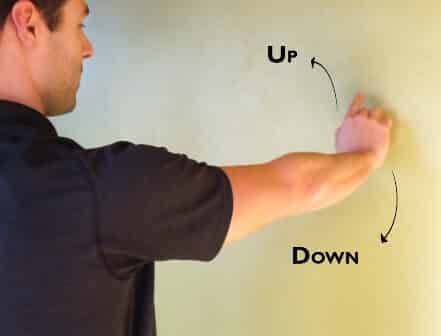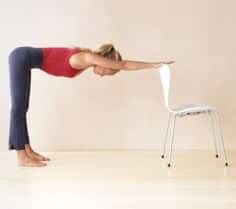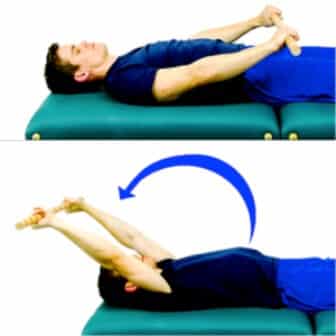Physiotherapy treatment for frozen shoulder pain
Call Us: +91-9421750231, +91-7875411115.

How does frozen shoulder pain physiotherapy treatment at home help?
Frozen shoulder pain, also known as adhesive capsulitis, is a medical condition that is characterized by stiffness and pain in your shoulder joint. Frozen shoulder limits the motion of the arm and can cause hindrance in carrying out daily activities. To restore functionality and mobility as well as to alleviate pain, the therapeutic methods and procedures of frozen shoulder physiotherapy are recommended to the patients. To know more about how one can receive physiotherapy for shoulder pain at home.
Though there is no clear reason as to why people develop frozen shoulder pain, it can stem from one or more of the following causes:
– Any type of shoulder injuries like tendinitis, bursitis, and rotator cuff injury can lead to frozen shoulder pain
– Frozen shoulder pain is more prominent in women than men and occurs between the ages of 40-60 years.
– Anyone who is recovering from stroke or mastectomy is at risk of developing frozen shoulder pain.
– Over 10-20% of people with diabetes are at risk of getting frozen shoulder.
– Frozen shoulder pain is also linked to other illnesses like Parkinson’s disease, thyroid, and heart disease.

Stages of Frozen shoulder
Freezing Stage
Freezing, or painful stage: shoulder pain increases gradually, making shoulder motion harder and harder. Pain tends to be worse at night. This stage can last from 6 weeks to 9 months. Frozen: Pain does not worsen, and it may decrease at this stage.
shoulder pain increases gradually, making shoulder motion harder and harder. Pain tends to be worse at night.
Frozen Stage
shoulder pain increases gradually, making shoulder motion harder and harder. Pain tends to be worse at night. This stage can last from 6 weeks to 9 months. Frozen: Pain does not worsen, and it may decrease at this stage.
Use your good arm to lift your affected arm at the elbow, and bring it up and across your body, exerting gentle pressure to stretch the shoulder. Hold the stretch for 15 to 20 seconds.
Thawing Stage
In this phase, the capsule of the shoulder joint has become thickened and stiff, but over time it gradually loosens. It is important to stretch the shoulder capsule, even allowing for some discomfort, in order to ensure the shoulder joint mobility continues to recover.
The shoulder pain diminishes especially when it’s not used. The shoulder’s range of motion decreases notably, and it becomes even stiffer.
Can A Customized Physiotherapy for frozen shoulder Pain Help?
Advice and early activity
There is significant evidence to prove that encouraging early movement in the case of shoulder pain is one of the most significant aspects of treatment in this condition by frozen Shoulder physiotherapy treatment at home.
Mobilization or Manipulative Physiotherapy for frozen shoulder
This aspect concentrates on promoting mobilization of the specific affected area. The approach of manipulative frozen shoulder physiotherapy treatment at home is used to target the specific point of pain for the purpose.
Hot or cold compression packs:
Depending on your preference and comfort, you could compress the shoulder area with a hot compress or ice pack for 15 minutes several times daily. This can help you in reducing any pain and swelling in the area.
Shoulder support:
Using shoulder support can help you to reduce any discomfort in the initial stages. However, it is recommended to use the sling sparingly because that could result in the immobility of the shoulder.
Ergonomic advice Physiotherapy for frozen shoulder
61% of all occupational illnesses are associated with repetitive motions 15 to 20% of workers in key industries are at potential risk for MSD. Because of the slow onset and relatively mild nature of the trauma, the condition is often ignored until the symptoms become chronic and more severe injury occurs

COMMON Physiotherapy for frozen shoulder INCLUDE
Often called a stiff or “frozen shoulder,” adhesive capsulitis occurs in about 2% to 5% of the American population. It affects women more than men and is typically diagnosed in people over the age of 45. Of the people who have had adhesive capsulitis in 1 shoulder, it is estimated that 20% to 30% will get it in the other shoulder as well. Physical therapists help people with adhesive capsulitis address pain and stiffness and restore shoulder movement in the safest and most effective way possible.
Most frozen shoulders get better on their own within 12 to 18 months. For persistent symptoms, your doctor may suggest steroid injections. Injecting corticosteroids into your shoulder joint may help decrease shoulder pain and improve shoulder mobility, especially in the early stages of the process.
Physiotherapy for shoulder pain TECHNIQUES ARE:
- Patient education
- Exercise therapy
- Ultrasound therapy
- Advice on overhead activities
- Hot fomentation
- Range of Motion exercise
- Athletic taping
Physiotherapy exercises For frozen shoulder pain

Pendulum stretch for shoulder pain
This exercise helps relax the muscles of the shoulder and neck and allows for passive range of motion of the shoulder joint. It’s best for people who have a difficult time withstanding exercise due to balance or back pain. Relax your shoulders. Stand and lean over slightly, allowing the affected arm to hang down. Swing the arm in a small circle — about a foot in diameter. Perform 10 revolutions in each direction, once a day.

Towel stretch
Stretching Exercises Are Best. The best remedy for a frozen shoulder is stretching out the muscles in your shoulder and rotator cuff. Gently getting the shoulder moving again is the safest way to treat this condition, and utilizing the opposite “good” arm as the “therapist” arm, you can gently stretch in any direction. Hold one end of a three-foot-long towel behind your back and grab the opposite end with your other hand. Hold the towel in a horizontal position. Use your good arm to pull the affected arm upward to stretch it. You can also do an advanced version of this exercise with the towel draped over your good shoulder.

Finger walk
- Stand facing a wall, about 6 to 8 inches away.
- Using the hand of the affected arm, touch the wall just above waist level with the index and middle fingers. The elbow should be bent, making a “v” with the arm.
- “Walk” the fingers up the wall, until the arm is raised as high as it can comfortably reach.

Cross-body reach
- From sitting or standing, place your
- unaffected hand on your affected elbow.
- Draw your affected arm across your body.
- Use gentle pressure to lift your elbow and stretch your shoulder.
- Hold the stretch for 20 to 30 seconds.
Repeat 5 times.
Bilateral frozen shoulder occurs in around 14% of patients. There is usually a gradual onset of severe pain in the shoulder, which is associated with stiffness.

Armpit stretch
Strengthening the muscles around the knee will decrease the stress on the joint itself. Armpit stretch: With the support of your healthy arm, lift the arm with the frozen shoulder up and rest it on a surface at about chest level. In this position, slowly bend your knees so that your armpit opens up and you can feel it stretching. Then stand up straight again.

Outward rotation
Keeping your elbows against your body swing your forearms away from your body. This is lateral rotation — also referred to as external rotation — and the normal range of motion for a healthy shoulder is 90 degrees. The movement that brings the anterior surface of the limb toward the midline of the body is called medial (internal) rotation. Conversely, rotation of the limb so that the anterior surface moves away from the midline is lateral (external) rotation.

Inward rotation
The rotator cuff is composed of four muscles: the supraspinatus, infraspinatus, teres minor and subscapularis (Figure 1b). The subscapularis facilitates internal rotation, and the infraspinatus and teres minor muscles assist in external rotation. The rotator cuff muscles depress the humeral head against the glenoid.

Wand exercises for shoulder pain
- Lie on your back, holding a wand with your hands. Your palms should face down as you hold the wand.
- Keeping your elbows straight, slowly raise your arms over your head until you feel a stretch in your shoulders, upper back, and chest.
- Hold 15 to 30 seconds.
- Repeat 2 to 4 times.
FREQUENTLY ASKED QUESTIONS
can physiotherapy cure frozen shoulder?
You may benefit from the skilled services of a physical therapist if you have a frozen shoulder. Physical therapy for frozen shoulder typically involves using therapeutic modalities and procedures to decrease your pain, and aggressive range of motion (ROM) exercises to help improve your shoulder’s mobility.
How long does it take to recover from frozen shoulder
Freezing, or painful stage: Pain increases gradually, making shoulder motion harder and harder. Pain tends to be worse at night. This stage can last from 6 weeks to 9 months. Frozen: Pain does not worsen, and it may decrease at this stage.
What is the fastest way to cure frozen shoulder?
Physiotherapy for Knee pain TECHNIQUES ARE:
- Patient education
- Exercise therapy
- Ultrasound therapy
- Advice on overhead activities
- Hot fomentation
- Range of Motion exercise
- Athletic taping
WHAT MAKES YOU BETTER THAN OTHER PHYSIOTHERAPISTS?
you’ll benefit from a prompt flexible service. That includes a professional assessment and diagnosis followed by a tailor-made rehabilitation program suited to your individual needs. They have extensive experience, working both in clinics and Physiotherapists’ home visits.
What are the types of frozen shoulder?
FREEZING STAGE
Freezing, or painful stage: Pain increases gradually, making shoulder motion harder and harder. Pain tends to be worse at night. This stage can last from 6 weeks to 9 months. Frozen: Pain does not worsen, and it may decrease at this stage. Pain increases gradually, making shoulder motion harder and harder. Pain tends to be worse at night.
FROZEN STAGE
Pain increases gradually, making shoulder motion harder and harder. Pain tends to be worse at night. This stage can last from 6 weeks to 9 months. Frozen: Pain does not worsen, and it may decrease at this stage. Use your good arm to lift your affected arm at the elbow, and bring it up and across your body, exerting gentle pressure to stretch the shoulder. Hold the stretch for 15 to 20 seconds.
THAWING STAGE
In this phase, the capsule of the shoulder joint has become thickened and stiff, but over time it gradually loosens. It is important to stretch the shoulder capsule, even allowing for some discomfort, in order to ensure the shoulder joint mobility continues to recover.
The shoulder pain diminishes especially when it’s not used. The shoulder’s range of motion decreases notably, and it becomes even stiffer.
How much does a session of frozen shoulder Physiotherapy cost?
The average cost of a physiotherapy session is 600 – 700 Rs. This is the average across Pune. The cost of a physiotherapy session can be as low as 500 Rs. as manual therapy is also included in the session you don’t need to pay any extra cost for manual therapy.
How do you know if you need physiotherapy?
If you had a particularly hard day at the gym, you would feel sore afterward. But if your pain is persistent and not getting any better, that is a sure sign that you need to see a physiotherapist. Likewise, mobility and movement are reasonably constant for a person. Sure, with age they change, but not overnight.
WHAT SHOULD I EXPECT ON FIRST VISIT ?
Our Physiotherapists will try to understand what your goals are, they will explain how they will assess you and ask for your consent before they start. After the assessment, the physiotherapist will explain what physiotherapy can help you with, how long it might take, and the expected outcome from the treatment.
